Contents
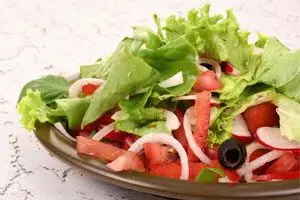
The hypocaloric diet has a medical justification. It is recommended for people who suffer from obesity, or from a serious violation of metabolic processes in the body. This weight loss technique is now practiced not only by doctors, since all its secrets have become known to a wide range of people. In an effort to lose weight as quickly as possible, many do not stop even in front of the fear of hunger. The hypocaloric diet is based on the diet of table number 8.
The eighth table or the Pevzner table (8A / 8O) can be considered a classic version of a hypocaloric diet. The diet is built on the reduction of kilocalories depending on the body weight of a particular person. This table was developed by experts in the field of nutrition, as it is intended for people who are obese and lead a sedentary lifestyle. The hypocaloric diet has a balanced menu, which makes it a priority compared to other types of diets. The menu is designed in such a way that it contains products from most of the main groups.
The process of losing weight on a hypocaloric diet is triggered by the fact that a person cuts his daily calorie intake. He receives a limited amount of kilocalories from food, which is hardly enough for him to ensure normal functioning. In reserve, the body will simply have nothing to put aside. To compensate for the lack of kilocalories, the body begins to burn its own fat deposits. Fat is transformed into energy and the person loses weight.
The main distinguishing feature of this diet is that it will have to count the kilocalories of each product. You can also use ready-made menu options, but often you still have to adjust them for yourself.
Eating on a hypocaloric diet implies compliance with the principle of fractionation. During the day, a person should come to the table at least 5 times. In this case, three meals will be the main ones, and two additional ones. As a snack, you can use fresh vegetables and fruits, as well as milk drinks.
The duration of the diet should be determined by the doctor. It is based on the state of human health, and what is the initial weight of the person losing weight also matters. However, the diet should not be practiced for longer than 2-3 weeks. A person should lose no more than 2-3 kg per month so as not to harm his health.
Principles of a hypocaloric diet

The hypocaloric diet is based on the following principles:
Before you start a diet, you should prepare. To do this, you need to arrange fasting days for yourself, during which only vegetables or kefir are eaten. This will allow the body not to perceive the transition to a half-cut menu so painfully.
The number of kilocalories should be reduced gradually, starting from 500 kcal per day.
Protein foods on the menu are not cut, only carbohydrate intake should be reduced by three times and the amount of fat by half.
Limit sugar, salt and caffeine in the diet. You should also reduce the amount of water you drink. If most diet programs, on the contrary, recommend drinking as much liquid as possible, then a low-calorie diet requires you to “dry out” the body by expelling excess water from it. However, this does not mean that you can not drink during the diet at all.
The menu is based on eating foods that are rich in fiber, protein and vitamins.
You need to eat often, but in small portions.
Longer than 3 weeks of the proposed diet should not be followed.
The hypocaloric weight loss system allows you to speed up metabolic processes in the body, normalize blood glucose levels, and improve the digestive system as a whole. The body is cleansed of toxins, toxins are released from it, fats are broken down. Against the background of general recovery, blood pressure stabilizes.
During the diet, you can play sports, but the load should be minimal. If this is not possible, then you can simply walk, or do gymnastic exercises at home.
Varieties of hypocaloric diets
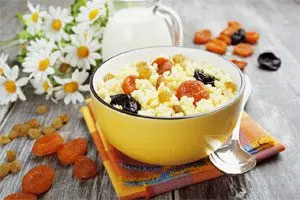
There are 4 varieties of the Pevzner diet, which depend on what kind of excess weight a person has:
Diet 1800 kcal – this diet is suitable for those people who suffer from overweight, but they have not developed obesity.
Diet 1500 kcal – this diet is suitable for people with the first stage of obesity.
Diet 1200 kcal – such a diet is prescribed for people with the second degree of obesity.
Diet 800 kcal – such a diet can only be prescribed by a doctor and only to those people who suffer from 3-4 degrees of obesity. During its observance, a person must adhere to bed rest.
There are also foreign options for a hypocaloric diet, which range from 500 to 1800 kcal. Another Western diet differs from the Pevzner diet in that it cuts the amount of fat: 20 g per day on a foreign diet versus 40-60 g of fat on a Russian diet.
However, regardless of which diet option was chosen for weight loss, you need to enter it correctly. Without a preparatory stage, it is forbidden to sharply reduce the number of kilocalories. Every day you need to reduce your daily calorie content by 500 kcal until its value reaches 1300 kcal. Only after that you can switch to the menu of a low-calorie diet in the full sense of the word.
Diet
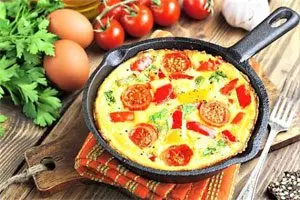
When compiling the menu, you must consider the following recommendations regarding the selection of products:
Protein count animal origin should be at the level of 60-70%. These are meat, eggs, fish, seafood. About 30% of proteins should be of vegetable origin – these are cereals, beans, soybeans, peas and mushrooms. A person should consume protein no more than 1-1,5 g / kg of body weight per day. It should be taken into account that animal proteins contain fats, therefore their calorie content is higher than vegetable proteins.
Fats the menu can be represented by fats of animal origin, which should not exceed 30% of the total fat in the body. These are products such as: butter, fatty meats, lard, waterfowl, dairy products. Vegetable fats occupy the bulk of the fat in the diet of a person who adheres to a hypocaloric diet. Their share is 70%. In this case, a person should eat vegetable oils, nuts, seeds, olives. If animal fats are a source of saturated fatty acids and cholesterol, then vegetable fats supply unsaturated fatty acids to the body and help lower cholesterol. The use of fats in food increases appetite, as they give food a pleasant taste. Therefore, there is a parallel between how much fat a person eats and how quickly he gains weight. In this regard, it is so important to observe the above proportion of 70 to 30. Also, when compiling the menu, it should be borne in mind that fat is hidden in sausage, cheese, smoked products, confectionery, offal, ice cream and more. This must be taken into account when compiling the menu.
Carbohydrates can be slowly and quickly digestible, as well as not digestible – this is fiber. The latter include cereals, vegetables, herbs, wholemeal flour, berries and fruits. After entering the intestines, they do not break down, are not absorbed, and therefore do not have any effect on a person’s weight. Carbohydrates, which are absorbed by the body quickly, are represented by such products as: sugar, jam, juice, honey, sweets, chocolate, sweets, drinks containing sugar, dairy products. After they enter the body, they are rapidly absorbed into the blood, and therefore lead to weight gain. Slow carbohydrates include pectin and starch. They are not so rapidly absorbed by the body, as it spends time breaking them down. Foods that are sources of slow carbohydrates: corn, pasta, bread, cereals, flour.
Priority in the menu should be given to carbohydrates that are not digested at all, or are digested slowly. You also need to take into account that fast carbohydrates are found in many products in a latent form. The daily “limit” of carbohydrates on a low-calorie diet is 150 g, but no more.
In order for the diet to be as effective as possible, you need to periodically arrange fasting days for yourself, when the daily calorie content of the diet is 500-750 kcal. More than 2 times in 10 days, unloading should not be performed. During such periods, metabolic processes are accelerated, fat reserves are burned faster. The products that are taken as a basis on a fasting day can be: sour-milk drinks, fish, meat, cottage cheese, vegetables and fruits.
Menu for a week of a hypocaloric diet
| Breakfast | Snack | Dinner | Snack | Dinner | Snack |
1 | Oatmeal with milk, egg, apple juice | Casserole with cottage cheese and dried fruits | Cauliflower soup, baked fish, vegetable salad with sour cream, coffee | A glass of milk | Veal meatballs, salad with carrots, apples and celery. | A glass of yogurt |
2 | Boiled chicken eggs, banana and tea | Pudding with cottage cheese, fruit jelly | Ukha, casserole with vegetables and cheese, coffee | Salad with cabbage and chicken fillet | Omelet, cauliflower in garlic sauce, tea | A glass of fermented baked milk |
3 | Wholemeal bread, cheese, tomatoes, tea | Banana and a glass of ryazhenka | Boiled chicken breast, stewed cabbage, coffee | Cottage cheese and dried fruits | Boiled fish, stew with zucchini | A glass of curdled milk |
4 | Fruits, nuts and yogurt | Banana | Soup with beans and tomatoes, chicken fillet, broccoli, tea | Berry juice and nuts | Beans with tomatoes, juice | A glass of milk |
5 | Vegetables, cheese, tea | Kissel fruit | Chicken meatballs, coffee | toast and juice | Buckwheat and chicken breast | A glass of yogurt |
6 | Eggplant, fish, sweet pepper – all products are grilled | egg and coffee | Ukha, vegetable ratatouille | Steamed broccoli | Chicken breast and tomatoes, tea | A glass of fermented baked milk |
7 | Stewed beans, coffee | Vegetables and cheese | Zucchini soup, steamed rabbit cutlet, stew with carrots and peas | Cheese and tomato toast, coffee | Cucumber, greens with sour cream | A glass of curdled milk |
Permitted and prohibited products
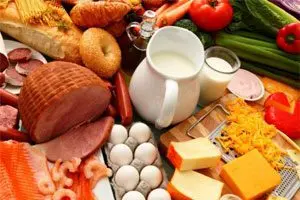
Foods that can be eaten while on a diet:
Animal and poultry meat: veal, beef, turkey, chicken, rabbit meat.
Egg.
Fish: herring, hake, tuna, pike, salmon. Seafood: mussels, squid, oysters, shrimps, crabs.
Legumes: beans, peas, lentils, chickpeas.
Mushrooms and seaweed.
Cereals: buckwheat, wheat groats, oatmeal.
Vegetable oil: olive, sunflower, corn, linseed.
Dairy products and milk with a low percentage of fat.
Crispbread and bread based on whole grain flour, bran.
Vegetables: carrots, onions, zucchini, celery, tomatoes, cucumbers, eggplants, green beans, etc. Lettuce, greens.
Nuts, olives, flaxseed.
Foods that should not be eaten while on a diet:
Fatty varieties of animal and poultry meat.
Smoked meats, sausages, lard, bacon, fast food, semi-finished products.
Dough, bread based on wheat flour, all bakery products, waffles, cakes, pastries, pancakes, dumplings and dumplings.
Sugar and foods that contain it. Including honey, halva, dried fruits, condensed milk, ice cream.
Sour-milk drinks containing sugar and other additives.
Semolina.
Potatoes, bananas and grapes.
Drinks containing alcohol and caffeine, spicy sauces, condiments.
Pros and cons of a hypocaloric diet
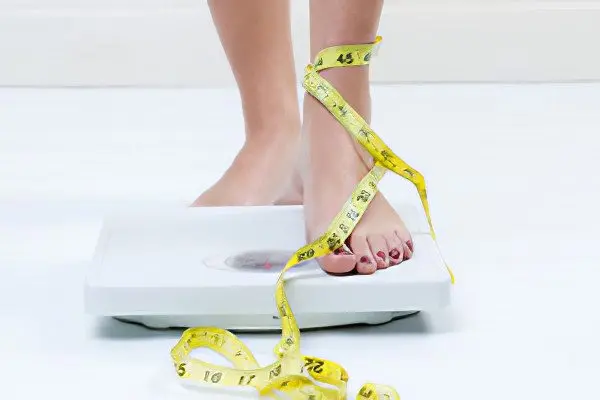
The benefits of the diet include:
The metabolism improves.
Weight goes away due to the fact that fats are broken down, not muscles.
The intestines are cleansed.
Muscles are strengthened.
The disadvantages of the diet include:
Diets can only be followed if a person is at home all the time. At work, it is difficult to follow the principle of fractional nutrition. Moreover, it is not always possible to bring food with you.
Diet should not be combined with physical activity, especially intense.
The weight won’t come off quickly. In a short period of time, it will not be possible to lose a large number of kilograms.
Противопоказания
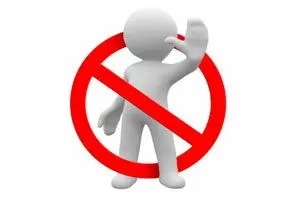
Diet contraindications:
Renal failure of a chronic course.
Significant physical activity.
Diabetic retinopathy.
Angina pectoris.
Age under 18 years old.
Diseases of the digestive system.
Childbearing and breastfeeding.
Diseases of the endocrine system.
Tendency to constipation.
Mental disorders.
Cardiac ischemia.
Arrhythmias.
Osteoporosis.
Atherosclerosis.
old age.
Infectious diseases in the acute stage.
Gout.
Feedback and results
Conclusion
The hypocaloric diet is characterized by a balanced composition, while the priority in the menu is given to protein products. When compiling a diet, it is important to use a wide variety of products, you also need to monitor the calorie content of dishes. To lose weight faster, you need to do gymnastics. If obesity does not allow you to engage in active sports, then you can just go for walks. The main thing is that the number of kilocalories does not exceed the permissible norm.









